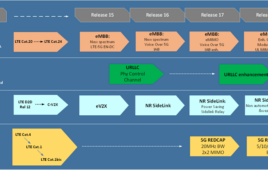turn to customer care to hold on to subscribers.
With prepaid plans dipping as low as $30 per month through TracFone Wireless’ Straight Talk service, it’s not clear how much longer discount carriers can compete on price. As a result, some low-cost carriers are looking to hold on to their customers with good, old-fashioned customer service.
One of these service providers is Boost Mobile, the prepaid arm of Sprint Nextel. Boost’s chief services officer, Kelly Owens St. Julian, says customer care is an important part of the discount carrier’s business strategy.
“It’s absolutely a differentiator for us,” she says. That may sound like common sense, but it’s an unusual sentiment to hear from a prepaid carrier, which typically keeps costs low by taking bare-bones approaches to expenses like customer care.
 Owens St. Julian says the key to Boost’s approach is simplicity: Its services are simple and straightforward, and so is its customer care.
Owens St. Julian says the key to Boost’s approach is simplicity: Its services are simple and straightforward, and so is its customer care.
Prepaid carriers tend to attract a younger demographic, a group that tends to prefer automated versus in-person customer service offerings. That’s a good thing for carriers like Boost: Boost tends to route more calls to automated choices than its parent, Sprint, and sends technical issues to a specialized call center.
Automated choices are much cheaper than call centers, allowing Boost to meet the needs of its general demographic while managing customer care expenses.
Prepaid carriers’ profit margins are significantly slimmer than their postpaid brethren. The more expensive approaches to customer care are simply not an option. Instead, prepaid carriers like Boost focus on keeping their automated offerings as efficient as possible while tailoring them to their target demographic.
BUILT-IN CHALLENGES
Doing customer service in the prepaid sector has some significant challenges that limit its efficacy as a differentiator, however. The core of the issue has less to do with managing expenses than with the basic dynamics of the prepaid environment.
For instance, unlike the long term customers typical of postpaid carriers’ subscriber base, prepaid carriers’ customers don’t have the same kind of loyalty. “You don’t even know who the prepaid customers are, so retention is really hard,” says Sheryl Kingstone of Yankee Group. “You don’t necessarily have that same relationship built that you do with postpaid.”
Essentially, prepaid providers have to make do with less financial resources and less information on their customers. As a result, the goal of most prepaid carriers’ customer care efforts center more around the basic issue of getting a customer to refill their minutes so that they remain a customer for the next month.
To that end, Kingstone says it’s more important for carriers – both postpaid and prepaid – to track customer loyalty versus customer satisfaction with their current provider.
 “It’s my opinion that it’s more important to track ‘more likely to recommit,’ and they’re more likely to do that if the customer service is better,” Kingstone says. She goes so far as to say that the relationship between carriers and their customers is “more important than the value and price” of a carrier’s services – even in prepaid.
“It’s my opinion that it’s more important to track ‘more likely to recommit,’ and they’re more likely to do that if the customer service is better,” Kingstone says. She goes so far as to say that the relationship between carriers and their customers is “more important than the value and price” of a carrier’s services – even in prepaid.
SUPPORT FOR BOTH
Perhaps no carrier believes that more than U.S. Cellular, which has long touted its commitment to customer care. U.S. Cellular is primarily a postpaid shop, but it has a growing prepaid base to which it takes the same rigorous approach to customer service. U.S. Cellular is unique in that it provides the same support to its postpaid customers as it does to its prepaid customers.
“Our strategy, while customer service is part of it, is customer satisfaction,” says John Coyle, chief service officer at U.S. Cellular. “We’re trying to reframe some of the current dynamics of the industry around what that looks like.”
Coyle says U.S. Cellular is trying to address what he sees as the “unaddressed” needs of wireless subscribers. To that end, the company launched a battery swap program that allows subscribers to exchange dead handset batteries for fresh ones. The carrier also has put into place more standard customer service offerings, like proactive overage notifications via text message.
The question of whether customer care is effective at retaining customers remains unanswered in some regards. Despite their emphasis on customer care, Sprint and U.S. Cellular both lost customers in the third quarter. Sprint’s losses were lower than expected at 801,000 subscriber defections. U.S. Cellular’s losses came in its prepaid segment, where it lost 14,000 customers. The regional carrier added 8,000 postpaid subscribers during the same period.
Given that U.S. Cellular’s customer defections were entirely in its prepaid segment, it suggests that customers in that space were more interested in the bottom line service cost than customer service.
Sprint’s results are a bit murkier. The carrier has gone out of its way to improve its customer service, network performance and device lineup but still lost ground to its rivals in the third quarter. Analysts attribute much of this to the lure of devices on rival networks, but questions remain about the effectiveness of Sprint’s strategy at reducing churn, which rose to 2.17 percent in the most recent quarter.
Bob Johnston, who heads Sprint Nextel’s customer care initiatives, says the carrier is battling a “perception lag” about the quality of its customer service. “We’re working to leverage the third-party accolades we’ve gotten recently for our customer care,” Johnston says, citing a Nielsen report that found Sprint closed the comparative industry gap on call resolution over 15 percent in the past year.
No matter whether a company is postpaid or prepaid, the rise of social media has made customer care more than just a nicety. Web sites like Facebook and Twitter can quickly translate one bad experience to a subscriber’s entire social group.
CHURN VS. RETENTION
Companies that help manage customer service systems say the rise of customer care in the prepaid space is a relatively new but growing phenomenon. “Up until a couple months ago, I would have said our entire base was postpaid,” says InnoPath’s Vice President of Marketing Dave Ginsberg. “What’s happening is that [prepaid carriers] are focusing more on the customer experience. They’re beginning to speak with us about the same concerns as postpaid carriers would have.”
Ginsberg believes that the detrimental financial impact of high customer churn has prompted prepaid carriers to strengthen their focus on customer retention. “The rational behind this is that it’s more expensive to churn a customer than retain a customer,” he says. “Whether you’re a prepaid or postpaid customer, you expect a level of support from the operator, and I think companies are waking up to this point.”
Ginsberg says that the prepaid environment is more challenging than the postpaid environment when it comes to customer care. “Carriers have less control over what’s going into the network,” Ginsberg says. “In particular, there are more challenges in effectively configuring devices for data services.”
Prepaid carriers have to be particularly vigilant about managing the costs associated with customer care, says Brian Pawlus, director of product marketing at Oracle Communication’s billing unit. “They have to provide a really right self-service environment,” he says. “Prepaid customers are typically low-margin… Even one call to a customer service center can wipe out the profit margin for that customer.”
Pawlus says that self-service options remain particularly popular with prepaid clients because of their cost effectiveness, but customers also seem to prefer them. “A lot of people associate a painful experience with call centers,” he says. “As customers are becoming more Internet savvy, they do all sorts of things online that they once did [with call centers].”




